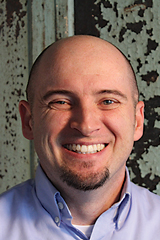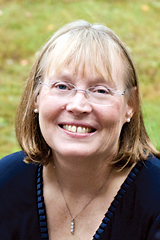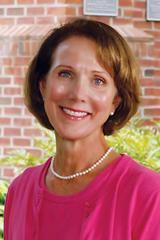
Frank and Bettina Hinckle’s son Ethan was doing well in public schools, but his parents knew how tough the middle school years can be for some kids. So they took a look at Seven Hills School in Richmond, a school for boys only, when Ethan was in fourth grade.
“We all liked it immediately; we could tell it was a good environment,” says Bettina. Ethan stayed at Seven Hills through grade eight and is now at Trinity High School. “They [Seven Hills] made it okay for him to be himself and ask questions. He became more confident and more independent.” About the social aspect of the single-gender school, Ethan says, “I did not think I would like an all-boys school. I was against it, but I’m so glad I attended Seven Hills.” In fact, Ethan says he liked it so much that he recommended a single-gender school for his sister.
With the vast number of education options in the Richmond market, making the right school choice for your child’s future could be the most important decision you ever face. Single-gender schools provide what many parents and educators consider a distraction-free learning environment that enhances students’ educational experience.
While there are pros and cons to single-gender instruction, momentum is building among education specialists to consider it a viable path, based on new research in that area.
A three-year study was conducted by Stetson University at a public elementary school in Woodward, Florida. Researchers divided students
into single-sex or co-ed classrooms. They made as many factors identical as possible in both groups. The school mainstreams its students,
which means children labeled ADHD or learning disabled were included. Classes were the same size and teachers were given the same training. On Florida’s equivalent of our SOL tests, the results were as follows: thirty-seven percent of boys in co-ed classes scored proficient on the test; eighty-six percent of boys in all-boys classes scored proficient; fifty-nine percent of girls in co-ed classes scored proficient; seventy-five percent of girls in all-girl classes scored proficient.
While both groups of single-sex students performed appreciably better on the test, it’s interesting to note that boys performed much better on these evaluations than girls did in a single-sex environment.

In a study that echoed these results, researchers from the University of Pennsylvania looked at the public school system in Seoul, South Korea. Why Seoul? In this school system, students are randomly assigned to co-ed or single-sex schools. Families cannot request an educational setting for their children. Investigators also controlled for factors like previous academic ability, socioeconomic background, and
class size.
The results showed that girls attending all-girls schools were significantly more likely to attend a four-year college compared with girls attending co-ed schools. Boys who graduated from boys’ schools were significantly more likely to attend a four-year college compared with boys who graduated from co-ed lower schools. The authors concluded that attending a single-gender school improved the odds that the student would go on to college and that his or her scores on college entrance exams would be significantly higher.
What are the Differences in Learning?
Dagan Rowe, head of Seven Hills School, says he sees reasons every day to support the conclusions from these studies. “Boys are very social. Many social pressures vanish when you put them in an all-boy environment. They can be themselves and focus more on learning.” He believes boys gravitate to more creative ways of learning. They want to do stuff, “less lecture, more hands-on,” says Rowe. Seven Hills schedules breaks in the curriculum to split up the big blocks of class time. These breaks are action-oriented, letting students play games outside. Classrooms at Seven Hills are roomy with only fourteen boys to a class, allowing for freedom of space and yet providing an intimate atmosphere that allows students to feel comfortable asking questions.

On the flip-side, Nancy Davies, head of Orchard House, an all-girls middle school in the Fan, says, “the middle school years are important for identity formation. This environment shows girls they can be leaders and make a difference.” As an example, Davies says for girls to be successful in math, they need to see themselves as mathematicians. “They can do that in this environment; it’s encouraged and promoted.” She stresses that the teaching at Orchard House is research-based to accommodate for gender differences in learning styles. Orchard House stresses healthy social relations because sixth-grade girls are very “peer aware” in that they get information on how to behave from their social group.
Maureen Williams, director of admissions and marketing at St. Gertrude’s School, a Catholic all-girls high school, agrees. “Studies show that girls learn differently. Adolescent girls need expressive language to learn, while boys are more movement and physically oriented. In adolescence, girls often lose their confidence, they back down, and they defer to males in a school situation,” says Williams. She adds that without boys in the picture, girls can feel free to express themselves and offer differing opinions; they can excel in math, debate, or sports – without social ramifications. “We have the successes to show it works later in their lives.”
Two of Williams’ students, Emily Carr, 18, and Jennifer Carr, 16, went from co-ed classes in public school to St. Gertrude’s. Emily says, “I wasn’t sure at all, but went on an hour tour of the school and thought, why not try it?” She said she was on the quiet side in public school, then got ill and missed a lot of school. “When I came back to school, I felt really shy. I held back in class and activities.” At St. Gertrude’s, Emily says she felt at home right away. She felt she could be the person she was before she got ill. “You are known there for what you do.”
Emily enjoyed St. Gertrude’s so much that her younger sister, Jennifer decided to go there, too. Jennifer says, “I was so quiet in public school, I never said anything in class.” Now, she adds, she talks all the time and even volunteers to do announcements over the school PA system. When asked about cliques, Jennifer says, “there are groups of course, but no mean-girl groups.”
what about single-gender options in Public schools?
If single-gender education works, should it expand to the public school system? Is that even legal? While federal laws established thirty years ago made sex discrimination in schools illegal, legislation that was part of the No Child Left Behind Act in 2006 allows public schools to create same-sex classrooms and even same-sex schools with the following provisions: The school must have a reason for doing so, provide a co-ed class in the same area geographically, and conduct a review every two years to insure that the need still exists. Charter schools are exempt from meeting those conditions. Some public schools have begun to experiment.

Of course, not all parents, school board members, education pundits, or administrators agree with the research. Some say that gender-specific teaching would be of benefit only if teachers were trained in that field, and that most instructors would not be able to practically employ the techniques that make gender-specific teaching successful. A second significant point is that maleness or femaleness is not seen to the same extent in all individuals. When it comes to gender-nonconforming students, a more assertive girl who is taught using female-oriented techniques might lose that assertiveness or become frustrated, and a boy who is more in touch with his female side might not benefit from the very physical, in-your-face styles
of teaching.
Opponents also say that men and women have to work together in the world and single-gender schools do not give boys and girls the opportunity to learn to work cooperatively with members of the opposite sex. Interestingly, there is also at least one academic study showing that the higher the percentage of girls in a co-ed classroom, the better the academic performance for all students (both male and female).
Lastly, the American Council on Education feels that the significant gaps seen in academic performance between students from different socioeconomic groups is a more important challenge to focus on, versus gender issues.
While the debate continue, students like Nicki Felmus of Richmond, age 17, do not need to be convinced. Nicki, now enrolled in Columbia University, felt so strongly about her four- year experience as a student at Orchard House, she published an essay on the topic in the Columbia University online periodical, Undergraduate Times. In it, Nicki wrote: “Looking back on those years, I can inspect my growth and know that without that single-sex environment, I would have dumbed myself down for boys and attempted to fit in with the in crowd. Without those four years, I wouldn’t be comfortable in my own skin and I would not take my studies as seriously as I do now.”
Ultimately, as all parents are most likely well aware, when making a school choice, your child’s learning profile will be the most important consideration.



